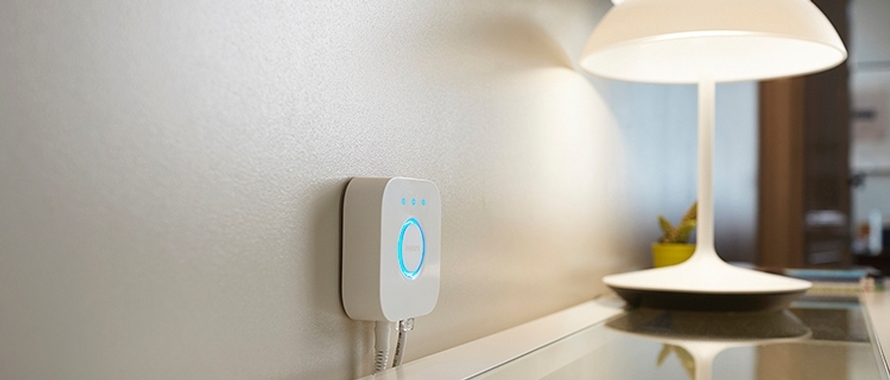Making Your Lights Smarter
Looking for an easy way to integrate smart technologies into your home—start with smart lighting.

Out of all the smart home technologies available on the market, smart lighting is one of the easiest technologies to integrate into your home. Smart lighting can be controlled by voice command, through your smart phone or through a smart home hub (like Amazon Alexa), making them relatively easy to control. They are also among the most affordable smart home devices, starting at about $10 per bulb.
There’s a range of benefits from using smart light bulbs. One of the most useful aspects of smart lighting is the ability to control the lighting while you’re away from home. For example, if you leave for work and forget to turn off the lights at home, you can easily turn them off with a few taps on a smartphone app. Alternatively, if you’re traveling but want to appear as if you’re home, you can turn on your lights at a certain time to create that illusion.
“Smart lighting can be beneficial for multiple reasons, but the big winner is security,”says Daniel Lofland, an Oklahoma Electric Cooperative technician.
Lofland utilizes a Ring doorbell camera and smart lights for his front porch and the pair sets desired scenes for his home. The porch lights can be scheduled to turn on and off depending on the time of day.
To increase safety at home, many smart light bulbs have motion-detection technology that can sense if a person is in the room or nearby. This feature can be programmed to send an alert to your phone when the smart lighting detects an unexpected motion, either inside or outside the home.
Beyond the more practical applications, smart lighting can simply be fun to use. Bulbs are available in a variety of colors and dimming options that can help to set different themes or moods for the room, from an exciting bright white to a calming dim light. Various color temperatures can create different moods and also potentially help with winding down at night and improving sleep quality. Blue light, which mimics daylight, prevents the release of melatonin, an important hormone to feel sleepy. Setting smart lights to warmer-colored lights at night can help release melatonin, and therefore lead to a better night’s sleep.
With all the benefits of smart lighting, there is also a higher price tag compared to regular light bulbs. Most smart lighting options on the market use LED light bulbs, which are more expensive but use less energy than traditional incandescent light bulbs and need to be replaced much less often. Incandescent light bulbs cost about $1; however, their life spans are relatively short at around 1,000 hours. LED bulbs typically start at about $2.50 per bulb, but their life spans are almost 25 times longer than incandescent bulbs. Switching from incandescent bulbs to LED smart bulbs can help save energy and money over the long run, despite the higher initial cost.
“Smart lighting can be worth the higher cost depending on what you are wanting to achieve with it,” Lofland says. “If you are hoping to gain some sort of security or add some schedules that bring peace of mind knowing you either have the lights set to automatically come on or go off at certain times, then they absolutely make sense.”
Lofland encourages residents to consider the reliability of internet services before incorporating a few smart lighting options to a home. Once comfortable with the system, residents can add more accessories as they please. Some realiable smart lighting brands include: Philips Hue, Sengled Smart, Kasa Smart, Cree and Sylvania.
Before making any purchases, be sure to research which smart lighting options work best for your home. Read several reviews to ensure your purchase is reliable during the entirety of its lifespan. There are plenty of smart lighting options out there and choosing the best personalized option will help you make the most of it.
Maria Kanevsky writes on consumer and cooperative affairs for the National Rural Electric Cooperative Association, the national trade association representing more than 900 local electric cooperatives. From growing suburbs to remote farming communities, electric co-ops serve as engines of economic development for 42 million Americans across 56% of the nation’s landscape.
Sign up for our Oklahoma Living Newsletter


